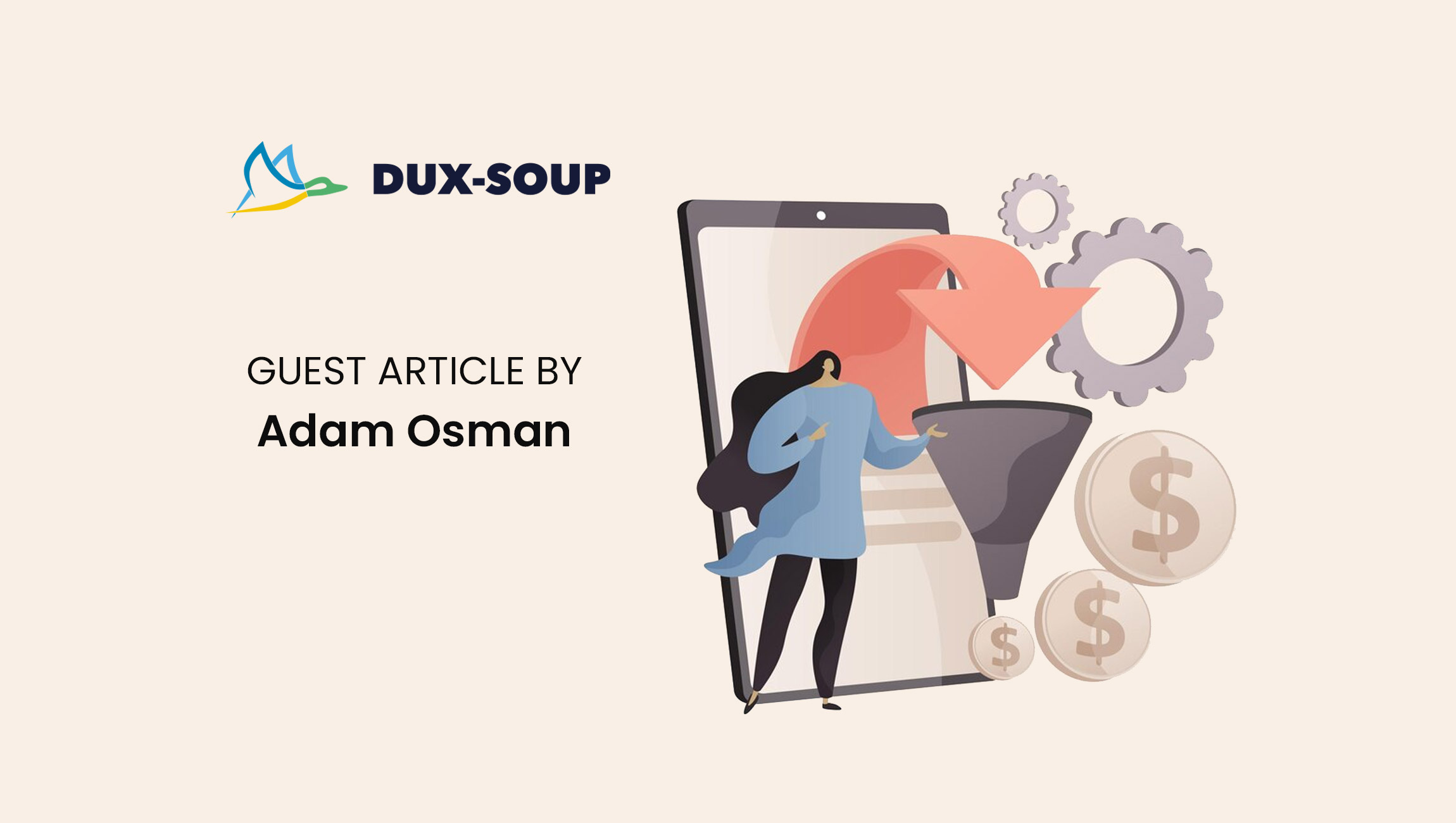The landscape for martech solutions moves fast but the underlying techniques used by marketing pros such as email, SEO and content publication remain largely unchanged. In the last few years, new lead generation technologies have emerged, allowing niche growth marketers and social selling experts to gain greater traction from the same amount of effort. LinkedIn lead generation is one such area where automation techniques have soared in popularity, moving it into the mainstream marketing mix.
The decline in digital marketing effectiveness
Traditional digital marketing activities are seeing lower ROI and effectiveness, impacting the ability of organizations to reach and engage with a target audience. Issues include:
- Deliverability and declining email open rates
- The proliferation of media channels as well as platforms and devices
- Ad blockers that prevent digital ads from appearing
- Content overload, a growing problem, particularly with AI making content creation so easy
- Data privacy regulations have imposed greater restrictions on the collection, storage and use of consumer data
It is becoming harder to target an audience and capture their attention. Addressing these challenges often requires a shift towards digital marketing strategies that offer greater targeting precision, real-time analytics, interactive communication, and adaptability to changing market conditions.
That’s why the success of automated lead generation tools and proven use cases showing the potential for exceptional ROI has gathered momentum.
The rise of LinkedIn in lead generation campaigns
Founded in 2003, LinkedIn has one billion members, nearly half of whom are engaged on the platform on a daily basis. LinkedIn natively offers precise targeting capabilities using a wide range of demographic criteria, alongside other filtering capabilities such as country, job title and keyword searches. The latter in particular, allows campaign builders to zero in on a very precise segment of the audience.
Around 10 years ago, martech vendors began to take note and the first LinkedIn automation solutions appeared. Initially, they focused on scraping data for use in email marketing systems.
Over time, both the functionality for communicating with LinkedIn members and LinkedIn automation technology matured and evolved. Features available in other martech platforms have now become commonplace with LinkedIn automation tools, such as dashboard reporting, sales funnel tracking, visualization and more.
Cost is a major advantage. Subscription models for LinkedIn automation tools are typically a fraction of expensive sales database costs. With the advent of cloud technology, safe, secure, automated lead generation is possible. Best practices have become established where the focus is no longer on ‘spray and pray’ campaigns.
Today, smart marketers are using the full features of LinkedIn and automated lead generation technology to create hyper-targeted campaigns that can be created and rolled out within minutes or hours at most, with results following closely behind.
Marketing Technology News: MarTech Interview with Vikram Ramachandran, Principal, AI @ 2X
Characteristics of LinkedIn lead generation
There are several key areas where automated LinkedIn lead generation has distinct advantages over other digital marketing platforms. These include:
- Precise targeting of the ideal customer persona (ICP). Given that data-driven marketing is no longer a nice to have, it’s a necessity, LinkedIn excels, particularly for B2B campaigns
- The ability to create one-to-one personalized messages, combined with multi-stage drip campaigns that provide numerous touchpoints with the ICP over days or weeks
- Near 100% message deliverability combined with high open rates
- LinkedIn has a responsive, self-selecting audience, who choose to be on the platform
- It is naturally suited to softer techniques such as social selling where the initial goal is to establish a conversation rather than a specific call to action such as ‘buy now’ or ‘book demo’
What’s more, all of the above can be achieved at scale and with comparatively little effort. This gives marketing pros greater return on investment.
The key goal in these campaigns, is often not to sell in the early stages. Whilst this may seem counterintuitive, LinkedIn as with other social platforms, works best when it is used to create opportunities for real conversations. You can develop campaigns where the aim to build relationships and engage, providing information of value to the audience, rather than immediately asking for a time and date for a sales or discovery call (that can come later!).
The most successful LinkedIn lead generation campaigns deliver a number of benefits. This includes pulling customers through the sales funnel, generating all important inquiries but also raising awareness within a targeted market. In many cases, the positive impact on brand awareness is becoming almost as important as metrics such as sales calls.
Integration of automated lead generation into the marketing mix
The use of LinkedIn automation for lead generation is not a panacea. It will not turn a poorly thought-out campaign with unclear messaging into a success.
It works best when integrated into a broader marketing mix alongside other channels such as email, where branding, messaging and targeting aligns with an overarching plan. For example a workflow might include integrated content publication, social media posts along with multi-stage emails. Non-respondents then flow into a targeted automated LinkedIn campaign.
The number of automated lead generation solutions continues to be a rapid growth area for the martech stack. With the addition of AI to assist with messaging and targeting, we are at a revolution in the capabilities available to smart marketers. What is inescapable though is that automated lead generation using LinkedIn is fast cementing a central place within a mainstream marketing plan of activities.
Also catch: Episode 199 of The SalesStar Podcast by SalesTech Star: Top Trends in Modern B2B Marketing with Emily Singer, Head of Marketing at Drift
Marketing Technology News: How Accountability is the Key to Consumer Respect and Successful Addressable Campaigns











